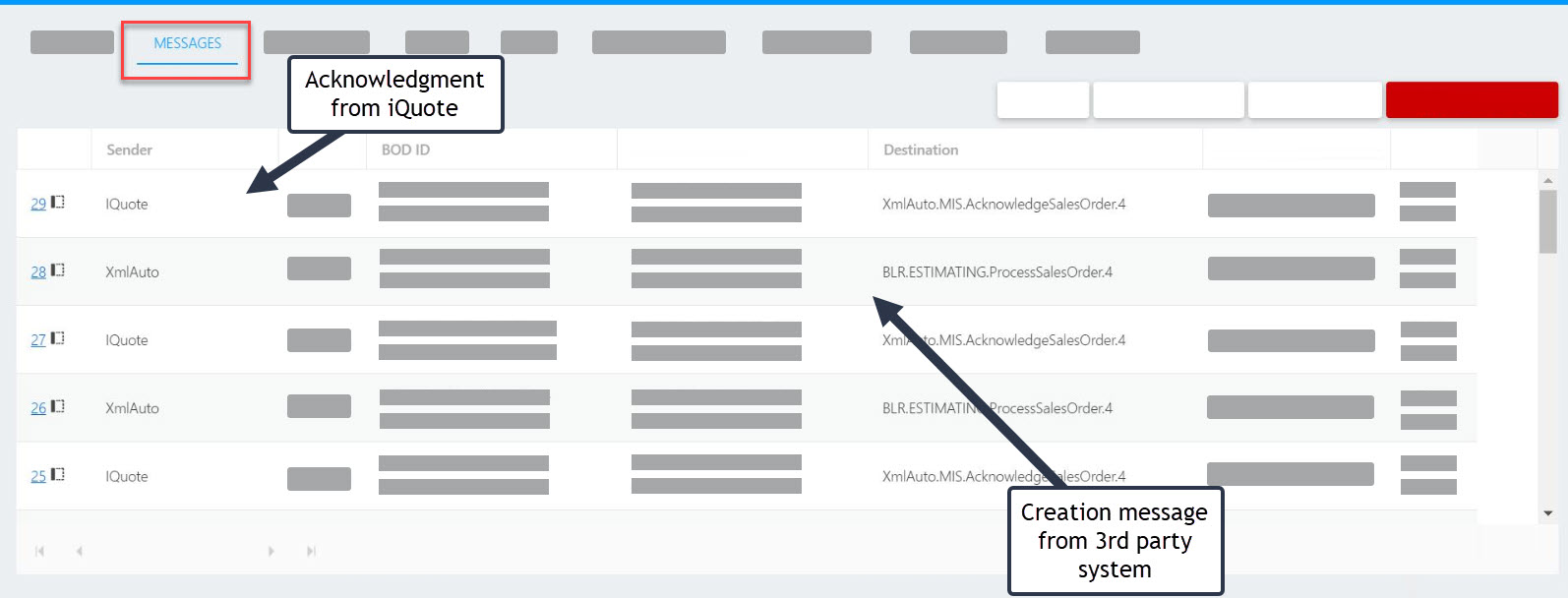Basic Workflow Overview
|
Step |
Performed By |
Action |
|
1 |
You |
Create a master estimate with all the desired products in iQuote for the XML Job Creator to use as a template. |
|
2 |
You |
Receive files from your customers, which you then read, process, and prepare for production. Tip: If you want to combine data from multiple customers into consolidated production runs, you must do the following:
|
|
3 |
eFlow |
Sends an XML file with the products required to iQuote for the job to be created. |
|
4 |
iQuote |
Validates all required fields in the XML file. |
|
5 |
iQuote |
Copies the master estimate and keeps only those products listed in the new XML received from eFlow. |
|
6 |
iQuote |
Automatically proceeds with the estimate workflow, which includes engineering calculations, approvals, etc. and sends the information back to eFlow, which notifies your MIS system, such as Monarch. |
|
7 |
iQuote |
After estimate approval, creates a new Job record to send back to eFlow and (if configured in iQuote) automatically generates a Sales Order record. |
|
8 |
eFlow |
Receives the new Job record and notifies the third party MIS (e.g., Monarch) to initiate the job, reserve inventory, create purchase orders, and initiate production operations. |
|
9 |
MIS
|
Sends the job information to your scheduling application (e.g., PrintFlow), if available, and creates a Job Billing record. |
|
10 |
Scheduling Application
|
If integrated with your system, sends information to the Auto-Count application for production. |
Tip: iQuote follows the same steps to create jobs from an XML data file, as indicated in the following workflow diagram:

When a third party MIS system generates an XML file, the file is sent to eFlow (a service that integrates communication among ePS components), which then sends an XML message to iQuote.
iQuote, in turn, sends an acknowledgement message back to eFlow indicating whether the jobs were correctly created or if the process produced errors. eFlow displays the messages similar to the following example:
